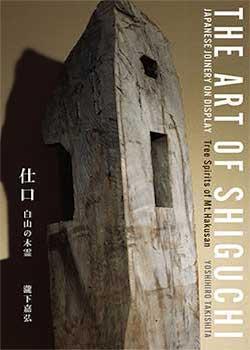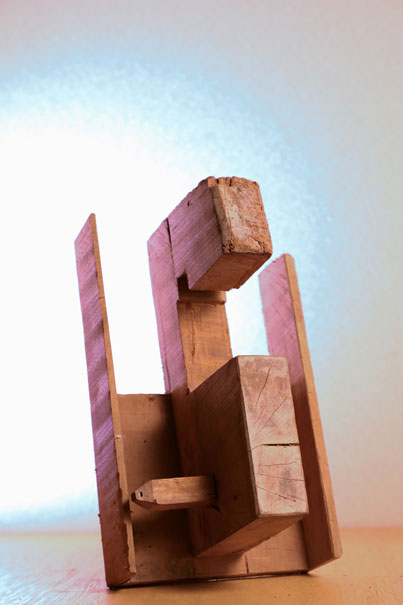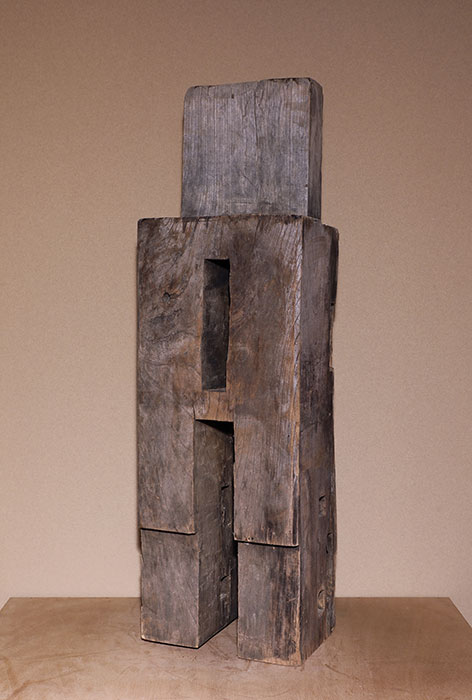The Art of Shiguchi. Japanese Joinery on Display

By Takishita Yoshihiro
Shiguchi-do (2017)
Parallel Japanese and English text
Review by Sir Hugh Cortazzi
Kamakura, the capital of the Minamoto Shoguns in the late 12th, 13th and early 14th century should be on the itinerary of any serious visitor to Japan (Exploring Kamakura by Michael Cooper, first published 1979 is an excellent little guide). There is so much to see, not least the temples of Engakuji and Kenchoji, the Hachimangu and the Daibutsu. Some tireless walkers may amuse themselves by walking up to Zeni-arai Benten shrine where they can wash their money in the hope that it will multiply. The intrepid will continue up to the shrine on Genjiyama and follow the road along the ridge where on a clear day there is a fine view towards the Izu peninsula and Mt Fuji. The discerning traveller will notice on the hill a small group of wooden buildings which, if he has visited some of the mountains of central Japan, he will recognize as former farm houses built in the gassho-zukuri style. This complex includes the ‘House of Antiques’ belonging to Takishita Yoshihiro, the author of this fascinating book.
Takishita Yoshihiro is a man of many talents and skills. He has much knowledge of the arts of Japan and exquisite taste. He is also a master craftsmen and builder having over many years saved many old farmhouses from the scrap heap and rebuilt them in other parts of Japan and places abroad as far away as the Argentine. He is happy to show the discerning visitor who makes an appointment in advance some of his treasures.
In the course of his reconstruction of old Japanese farm houses he was struck by the beauty and craftsmanship of the traditional methods of construction, in particular the way in which heavy wooden beams were slotted into one another. Nowadays with modern machinery, steel and concrete structures we take so much for granted.
Takishita relates in an introductory essay that his favourite minka (min = people, ka = house) was of the gassho-zukuri type found in area of Mt Hakusan, where the winter snows are heavy, and which were built two or three hundred years ago. The process of lowering the truss to the ground caused him ‘many thrilling moments as hundreds of years of history are brought to light from the accumulation of generations of dust’. He realized that to be strong and long lasting the pillars and beams needed sturdy and carefully worked joins or shiguchi which had been ‘carved out by carpenters in total devotion to their craft… Shiguchi are manifestations of the carpenters’ souls’.
Of course the shiguchi are not visible to the inhabitants of reconstructed minka, but Takishia was loath to discard them and kept some of the more interesting examples in his store room. He saw them as ‘the offspring of nature and necessity… the embodiments of construction, function, practicality and rationality… brought to life through the blessings of wood, man’s most precious natural resource’.
This book, in addition to illustrations of some of the shiguchi Takishita-san has kept in his store room, contains essays by experts and connoisseurs including ‘The Power of the Shiguchi’ by Peter Grilli, ‘Hidden beauty: Art in the the Craft of the Shiguchi’ by Edward R. Bosley,‘Shiguchi: The Essence of Wooden Architecture’ by Hiroshi Naito and ‘Shiguchi and a Sculptor’ by Naoko Kumasaka. Takishita Yoshihiro has written about ‘The Tree Sprits of Mount Hakusan’.The book also includes illustrations of the carpenters’ tools used by the traditional craftsmen who fashioned these joints. This section reminded me that once many years ago I had visited a carpentry museum in Kobe which underlined to me the importance of the joiner’s craft in a land where in the past all buildings were of wood and where some of the oldest wooden buildings in the world are still preserved e.g. in Nara.
I found it difficult to choose the best examples of shiguchi to reproduce in this review, but here are two examples that I found particularly striking:



